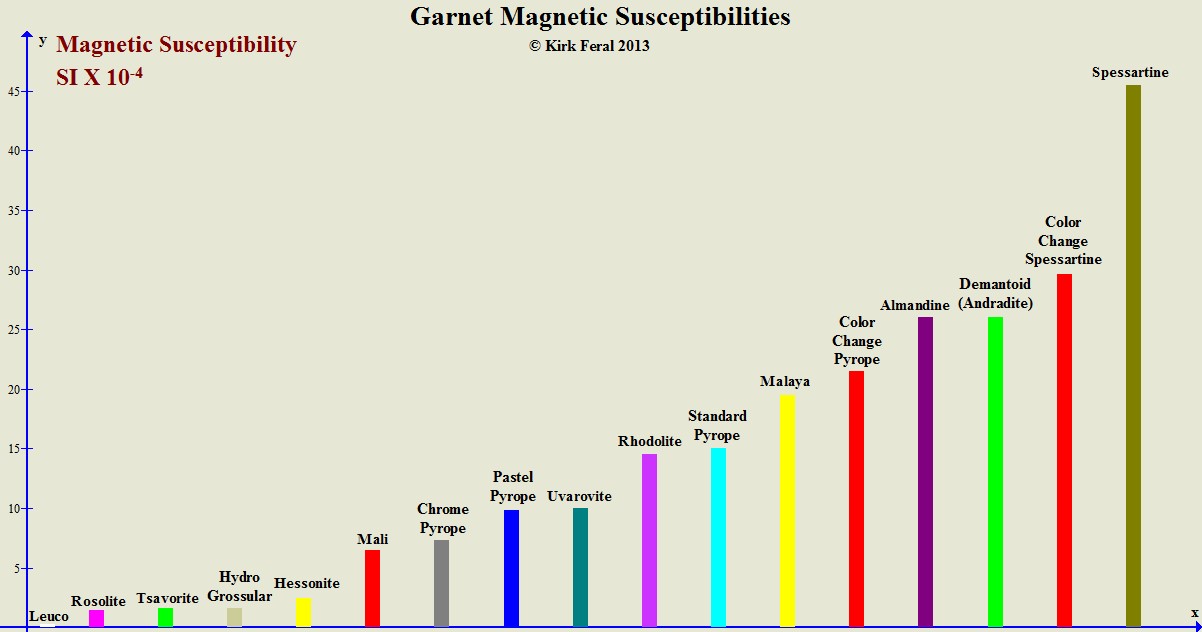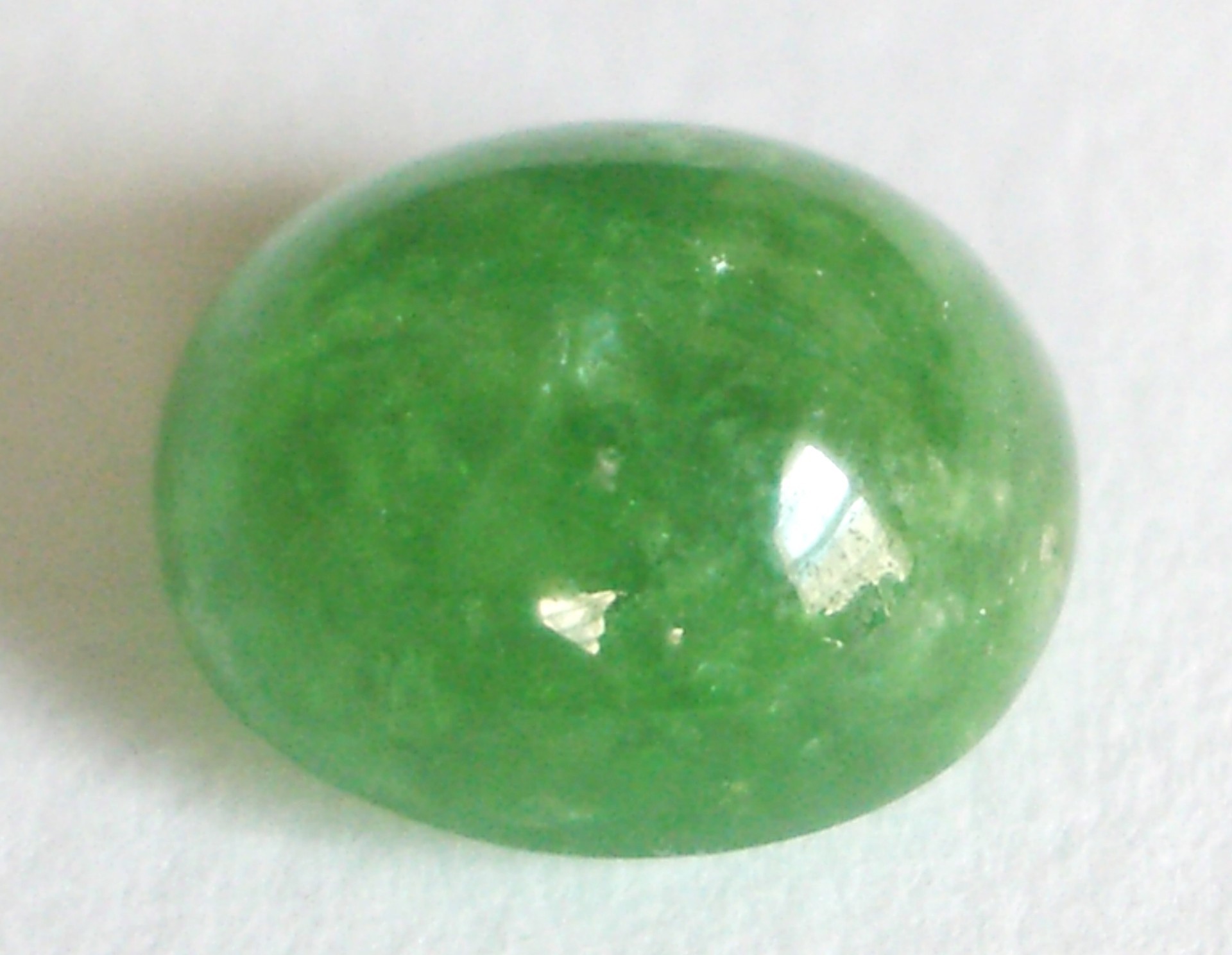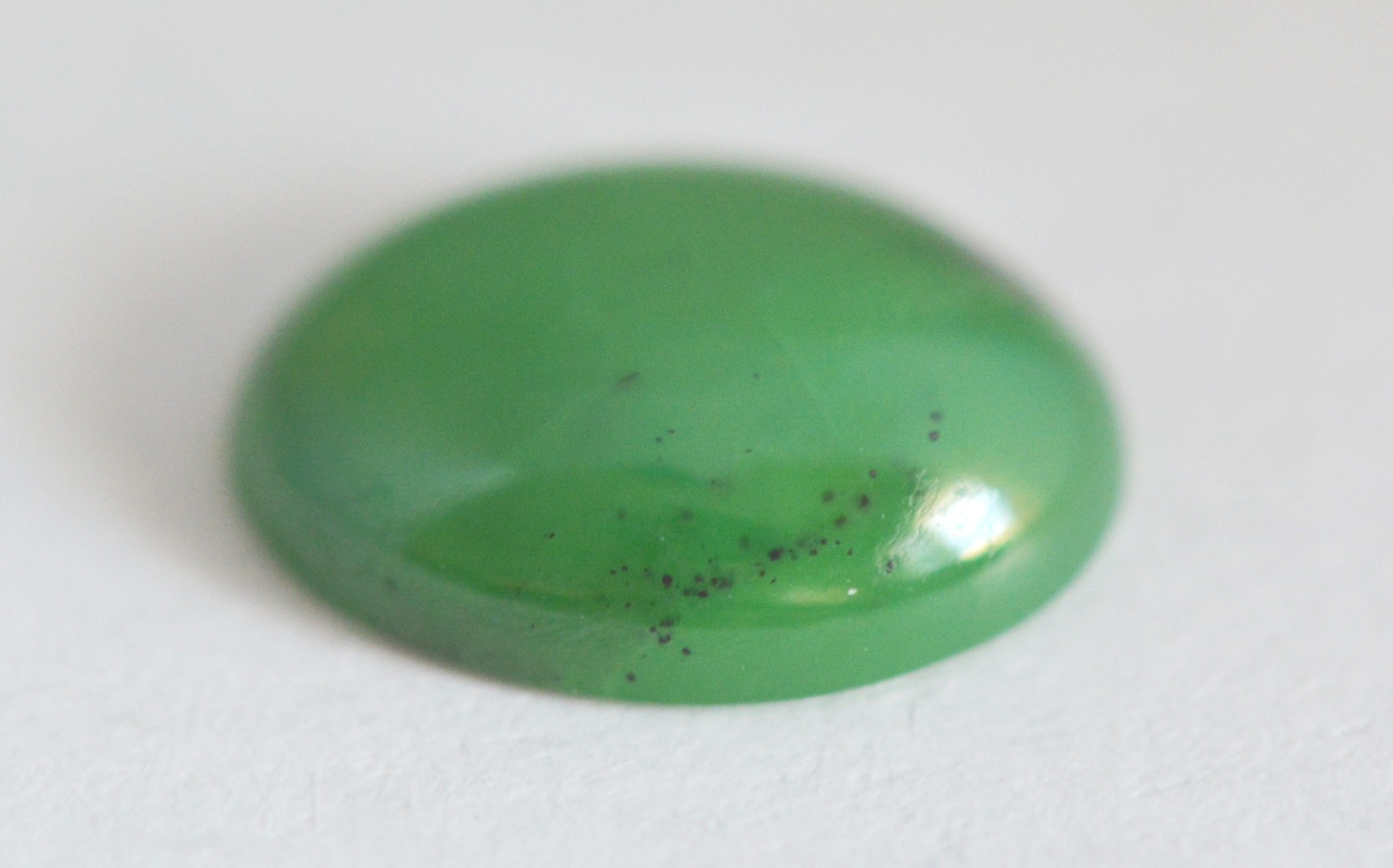© Kirk Feral 2011, All Rights Reserved. These materials may be duplicated for educational purposes only. No part of this website may be duplicated or distributed for profit, for commercial purposes, or for posting to another website without the expressed written consent of the copyright holder.
How Magnetic Are Garnets?
Red Almandine Garnets can be 100 times more magnetic than red Spinels, red Rubies and other weakly magnetic allochromatic gems that may appear similar to Almandine. Among Garnet species and varieties, magnetic susceptibility varies greatly, depending on the amount of iron and/or manganese within the Garnet. The green Mali Grossular Garnet pictured below left looks similar to the green Hydrogrossular on the right, but the Mali Garnet is much more magnetic due to higher iron (Fe3+) content.
Relative Magnetic Susceptibilities of Garnets
Garnet Magnetism
The bar graph below compares the degree of magnetic attraction (magnetic susceptibility) of most gem Garnet species and varieties in relation to each other. Garnets are presented from least magnetic to most magnetic. The height of each colored bar represents the median measured magnetic susceptibility for the species or variety. The color of each bar corresponds to graph point colors for species and varieties on the All Gem Garnet Graph on page 5.
This bar graph shows that Grossular Garnets (Leuco, Rosolite, Tsavorite, Hessonite, Mali) are the least magnetic Garnets. Spessartine is the most magnetic species, followed by Andradite and Almandine. The least magnetic variety among Pyralspite Garnets is Chrome Pyrope.
Chrome Mali Garnet
Drag Response
Chrome Hydrogrossular Garnet
Moderate Magnetic Response
Magnetism in Gemstones
An Effective Tool and Method for Gem Identification
© Kirk Feral



